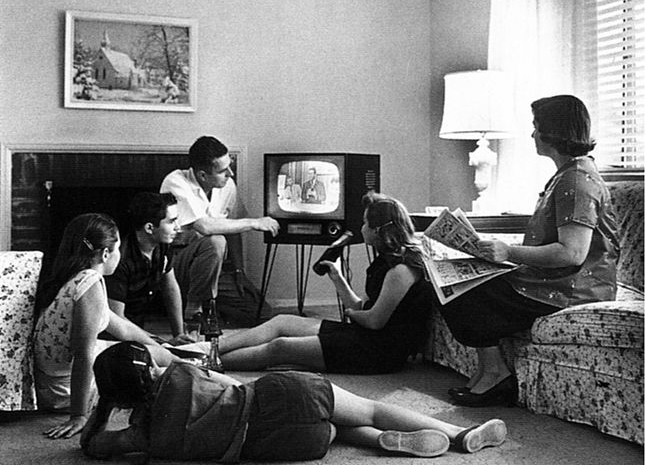Buying a new television set is not easy. Some stores tweak the settings of their TV sets, some tweak the lighting, some show the sets with no adjustment whatsoever, and others optimize to make each set look great. Of course, all of this is utter nonsense because no store can reproduce the environment where you will be watching at home. The next time you visit Best Buy, do not make any judgment about brightness, color rendition, or other qualities of the image–whatever you see in the store, it won’t be what you see at home.
There is one thing you can do in the store, of course. You can stand in front of the screen and wonder whether the set will be too big, too small, or just right for your room. Actually, you probably shouldn’t stand in front of the screen. Instead, with the set at eye level (not mounted six feet above your head), you can make a reasonable judgment. Here’s how.
Before you leave home, grab a tape measure. You’ll want one person to sit down in the chair where they are most likely to watch TV. Measure from the tip of the person’s nose to the place you intend to place the screen. In most American living rooms, this dimension will be about 10 or 12 feet. In smaller rooms, it might be 7 or 8 feet. Just for the sake of example, let’s assume the measurement equals 11 feet. Jot down this calculation:
- Feet = 11
- Inches per foot = 12
- Inches from nose to screen = 132
- Divide by THREE = 44 inch screen maximum
- Divide by FOUR = 33 inch screen minimum
Try that again, this time with a larger distance to the screen, say, 16 feet. That’s pretty far away, larger than most U.S. living rooms. Here’s how the numbers look:
- Feet = 16
- Inches per foot = 12
- Inches from nose to screen = 192
- Divide by THREE = 64 inch screen maximum
- Divide by FOUR = 48 inch screen minimum
Sure, we’re Americans! We love our television screens!! We want them as large as possible!!! (You’ll find article after article insisting that bigger really is better. For some people, that’s true. For most people, nose-to-screen distance is not more than 9 feet–not 11 or 16 feet as in our illustrations above). Add 10 or 20 percent if you’re VERY serious about sports or movies. Add 50 percent if your entire life revolves around a home theater.
No doubt. Certainly, many retailers would certainly prefer that you buy a set that costs $2,000 or so instead of $1,000 or less. For most principal viewing conditions, a TV in the 46-55 inch range will be suitable. For a bedroom, the answer is probably under 40 inches.
Hey, one more thought. There’s a lot of confusion about LED vs. plasma screens, and if you’re not lucky enough to connect with a knowledgable floor sales person, you could make a poor (and heavy) decision in the wrong direction. LED sets are bright and ideal for rooms where there’s lots of ambient light. Good for spots, not so great for movies because their color rendition is, well, extended and somewhat unnatural. Plasma sets are not as bright, but they do a better job with skin tones and lifelike color rendition. But they run hot, use more power than LED sets, and tend to be heavier, too. If your room has any significant ambient light (coming from windows or fixtures), you may be spending a lot of time fighting reflections. For several years, plasma sets were not popular, but a renewed focus on this technology, especially from Panasonic and Samsung, has resulted in plasma screens now widely available, even from big box retailers.
Before you buy, study the reviews. Editorial reviewers have the benefit of seeing many sets under the same (simulated real world) viewing conditions, so their comments are often more meaningful than the advice of people on the sales floor. I think cnet does an especially good job with TV reviews.
One more thought. I’m sitting here writing on a 21-inch iMac, a computer whose screen I regularly use to watch videos. The screen is not much more than a foot from the tip of my nose, so there’s no way that my formulas make any sense for those of us (lots of us) who watch videos, and the occasional movie, in this way. That makes me wonder whether we’re again crossing the great digital divide to some new way of thinking about the relative sizes of humans and their screens. Maybe our next screens will seem small at 100 inches. Maybe one wall of every room will be a TV screen. Heck, maybe every wall of every room will be a screen. Lots to think about!

